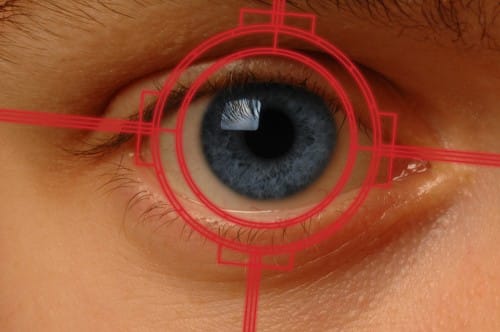Imagination activates some of the physical mechanisms associated with actual vision

Most people don't spend much time thinking about the diameter of their pupils. In practice, we don't have much control over the pupils, those openings in the center of the irises that allow light to enter the eyes. Aside from chemical intervention, such as the eye drops that ophthalmologists use to dilate the pupils of their subjects, the only way to dilate or shrink the pupils is by changing the intensity of the light in the environment. Turn off the lamp and your pupils will dilate to take in more light. Step outside into the sunlight, and they will shrink.
The action of the pupils, mechanical as it may be, allows researchers to test what imagination and perception have in common. Bruno Leng and Unni Solutvedt, researchers in the field of cognitive neuroscience at the University of Oslo, presented volunteers in a series of experiments that they had recently conducted triangles of different brightness levels on computer screens and recorded the size of their pupils. As expected, the pupils dilated when the shapes were dark and narrowed when the shapes were light. Then, the participants were asked to simply imagine the same triangles, and their pupils contracted or dilated, as if they were looking at the actual shapes. Leng and Sulutvedt noticed the same pattern when they asked participants to imagine more complex images and situations, such as a bright sky or a dark room.
It is common to think of the activation of the imagination as a "private and subjective experience, which is not accompanied by well-perceived or outwardly visible physiological changes," says Lang. But the new findings, published in the journal Psychological Science, challenge this perception. The research suggests the possibility that imagination and perception rely on a similar set of neural processes: when you imagine a dim restaurant, your brain and body react, to some extent, as if you were staying in that restaurant in real life.
The new experiments complement common methods of studying consciousness that provide subjects with visual stimuli without them being aware of it. Joel Pearson, a researcher in the field of cognitive neuroscience from the University of New South Wales in Australia, explains that studies on mental imagery take the opposite approach and allow subjects to be aware of the mental image without the accompanying stimulus. It is possible that with the help of a combination of the two approaches, the scientists will be able to better understand the way consciousness works.
The article is published with the approval of Scientific American Israel

One response
What's new?
Any hypnotist that prevents the hypnotized from (for example) responding
Reflexive to pain (known therapeutic use
teeth) uses imagination. what is the difference between it
and the reflexive response to the imagined light
In the new study?